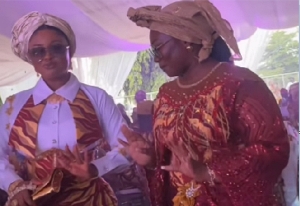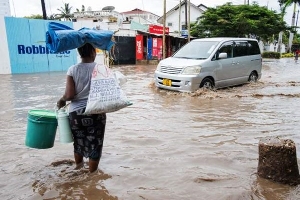- Home - News
- TWI News | TV
- Polls
- Year In Review
- News Archive
- Crime & Punishment
- Politics
- Regional
- Editorial
- Health
- Ghanaians Abroad
- Tabloid
- Africa
- Religion
- Election 2020
- Coronavirus
- News Videos | TV
- Photo Archives
- News Headlines
- Press Release
Opinions of Saturday, 11 February 2017
Columnist: kurt Davis
7 African countries favoured for infrastructure investment in 2017
African leaders view modern infrastructure as vital to economic growth. Yet, energy, the internet, and transport costs in Africa are among the highest around the globe.
Many officials have ambitious infrastructure-upgrade and new-build plans but are constrained by limited public budgets recovering from the economic struggles of 2015 and 2016.
More than ever before, private investors are intrigued by infrastructure investment in Africa. Some are aggressively pursuing opportunities to put their capital to use in addressing the $90 billion-plus annual infrastructure spending gap.
Private equity investors, including Blackstone and Abraaj, see great opportunity in investing in infrastructure projects. Both have built teams to focus specifically on developing projects (especially power) from conception to functioning physical entity in Africa. Expect more private equity players to enter into this space in 2017.
Senegal
Senegal is ideally located at the intersection of global shipping and regional trucking routes. The country is already working on the port of Dakar in Bargny to effectively replace the current ageing and congested port. The new port is a major upgrade for a country kicking into full growth mode.
Senegal is considered one of the most stable democracies in West Africa, yet it has generally lagged behind its peers for more than 10 years. But the economy grew about 6.5 percent in 2016, which is the largest percentage in more than 10 years, and is expected grow approximately 7 percent in 2017 and 2018.
While the new port is the illustrative grandeur of the Senegalese story, power expansion could be the engine to the growth narrative. Today the cost of power is high with more than 50 percent of the energy coming from biomass. The recent oil and gas finds, particularly Kosmos Energy’s “super-major” offshore gas discovery, present a great opportunity for gas-to-power plants. Having investors buy into this power expansion is vital for the country…the potential returns in the long-term are a good starting point.
Cote d’Ivoire
Ivorian President Alassane Ouattara, a former economist at the International Monetary Fund, and Ivorian Budget Minister Abdourahmane Cissé, a former Goldman Sachs trader, are both on the same strategic mental wavelengths. Strengthening the infrastructure in the country will key the next phase in the Ivorian growth story. Cissé says the government plans to spend $60 billion on infrastructure through 2020, with the private sector providing 68 percent of that funding. The spending plan includes more than 80 public-private partnerships targeting infrastructure in vital sectors such as transportation, telecom and energy.
The government pledges come with a track record. The country grew more than 10 percent in 2015 and surpassed 2,000 MW in power capacity in early 2016, underscored by the efforts of the Ivorian electricity generation company CIPREL (also an investment subsidiary of private equity firm Emerging Capital Partners). The country already exports to Benin, Burkina Faso, Ghana, Mali, and Togo. Expansion in the power sector is expected to continue, particularly from independent power producers (IPPs). Another bonus investment will be around transport and warehousing with the economy expected to grow between 8 percent and 9 percent in both 2017 and 2018.
Cameroon
This country has a power problem, highlighted by load shedding in the main urban area, such as the capital Yaoundé. Cameroonian President Paul Biya has pledged “to bridge the energy gap and end load shedding” with first-generation energy projects, such as soon-to-be operational Memve’ele and Mekin power plants, and longer term projects such as the Bini à Warak, Menchum, Song Dong and Nachtigal power plants. The president also introduced the National Electricity Transmission Corporation to address ongoing grid management issues.
The issue of energy capacity is partially a bottleneck for growth in the country. Current GDP growth projections are 4.5-to-5.5 percent for both 2017 and 2018. But the numbers, like the president, suggest that the country’s industrialisation process if it is to reach its true potential, will require more new power builds as well as an upgrade (and expansion) to the transport networks.
Uganda and Tanzania
Uganda and Tanzania are the East African wildcards. Both countries present opportunities on the power side, particularly with gas-to-power plants in the long term. Both countries also present political challenges with Uganda deciding to divert its oil pipeline through Tanzania rather than Kenya. Al-Shabaab also played a role in the reasoning behind that decision.
This diversion raises the cost of the pipeline for a country already facing budget constraints. And Tanzania, under John Magufuli, is implementing austerity plans, which directly (and indirectly) impacts investment in infrastructure.
So why bet on these wildcards? Both governments require private investment to address power and both have access to power inputs such as fuel oil and gas. The Karuma Hydropower Plant and Isimba Hydropower Plant in Uganda and the Mtwara Gas Project in Tanzania are the headliners. But those projects are insufficient to support the 5 percent-plus and 7 percent-plus growth in Uganda and Tanzania respectively for both 2017 and 2018.
Both countries also require investments in pipelines, roads and airports as the economy outpaces physical infrastructure necessary to support its growth. Some critics have questioned both governments’ ability to drive private investment in infrastructure. There is cause for optimism. Both presidents are interested in energy and industrialisation as well as the sponsorship of engineering, procurement and construction, and public-private partnerships in local projects.
Honorable mention
Democratic Republic of the Congo (DRC)
The DRC is a conundrum. The power blackouts and shortages are the norm in a country with a growing base of mining companies. Transmission and grid upgrades are necessary infrastructure requirements. More than 45 percent of firms in the DRC use generators to support their business with the frequent outages both from lack of power or weakened transmission networks. Estimates put the country’s cost-effective hydropower potential at 100,000 MW with installed capacity still below 50,000 MW. The reality is that there is massive opportunity…but there is still learning to be done (and a track record to be established) in the nascent DRC infrastructure space.
Nigeria
Nigeria excites and frustrates in the same breath. The country holds the largest gas supply in Africa, followed by Algeria (a top-10 global gas producer), yet fails to use the gas for producing power.
The Nigerian government is making efforts to change the energy outlook. For example, in 2015, the Nigerian Electricity Regulatory Commission raised electricity tariffs for commercial, industrial and residential energy users. After long haggling from potential investors, this would have been a benefit to independent power producers but local Nigerians are also demanding more affordable energy during the current economic downturn.
As a result, you have investors halting investments or worried about recuperating investment. A hurting currency (lumped with the lack of economic growth) does not help.
Kurt Davis Jr. is an investment banker focusing on the natural resources and energy sectors, with private equity experience in emerging economies.
He earned a law degree in tax and commercial law at the University of Virginia’s School of Law and a master’s of business administration in finance, entrepreneurship and operations from the University of Chicago











